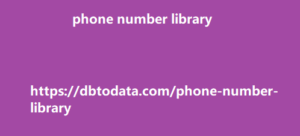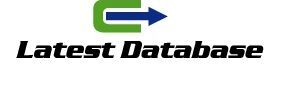Having the majority of your pages visible online equates to an overall improvement of website SEO authority. The information that Google Analytics present, provides everything you need in optimizing and restrategizing for website growth. So how can I further improve my analysis with both Google Analytics and Google Search Console? Analytics and Google Search Console One of the most volatile types of data in the world of digital marketing is organic search traffic. A lot of factors can affect the search traffic coming into your website. Some of the main factors of volatility in traffic include search algorithms, seasonal trends, an unexpected and unchecked bug in your website, and website server volatility.
And all of these can be quickly figured
out upon checking the GA and GSC tools. To further expound on the importance of website traffic data analysis, consider the following example. data comparison for website traffic data analysis One of our informational websites is receiving a decline in organic search traffic in comparison to the previous period. It lost an estimated 800 users in 1 month. To every website owner or SEO professional, this is considered an alarming loss in website traffic. Since the issue at hand mainly involves organic search traffic, the best tool to utilize next would be Google Search Console google search console impressions and clicks comparison analysis Based on the data presented, it appears that it is only expected to experience website traffic since there is a particular loss in impressions for the website.
And since there is a visible loss in
impressions, this would also affect the number of clicks the website is receiving within Google search results. What does this mean for our website traffic data analysis? Since there are fewer impressions coming to the website, your web pages are appearing less in Google search engine results pages. Luckily, Google Search Console also provides data on the search queries that users typed to discover your website. google search console search query list Based on the keywords shown, it is quite noticeable how particular keywords received a major drop in impressions. This means that the website is either not ranking for the keyword or that the search query is lower for that particular period.
And based on manually testing all these
keywords by searching them on azerbaijan phone number library Google, I was able to discover that the website is ranking on the first page on all of them. And a website that ranks on the first page of Google is guaranteed impression data. Based on all the data that I’ve gathered, we can only conclude that the website is undergoing a particular season wherein its keywords are being searched less by users. Rankings are going well, but there’s less traffic coming into the website. These are the kinds of conclusions that are only possible to hypothesize on when you employ tools like GA and GSC to provide the necessary information for website traffic data analysis.
Key Takeaway It is very easy to be overwhelmed
with data and information. But at the same time, as SEO professionals, we should also be grateful that we can easily acquire them through Google Analytics and Google Search Console. There would absolutely be no point in strategizing and executing optimizations if we have no information to prove our efforts. It’s only a matter of acknowledging the issue at hand, identifying relevant data to collect, and properly translating that data for you to develop the planned course of action for your website. This exactly represents the importance of knowing how to do even the basic website traffic data analysis.
Interested in an in-depth guide for GA and GSC?
Check out our Google Analytics Tutorial for Beginners and Google Search Console Guide! Want to experience Rank Tracker for yourself? Click here to sign up now.Visit their site and let us know what you think of it! Keywords are what dictate and direct your entire SEO campaign. This makes keyword research an extremely important task at the get-go. I hope that this guide has added value to you today and if it has, please also check out our full guide to keyword research for a new website here! A famous writer once said, “Tradition is a guide, not a jailer.
” What early practices of SEO teach us, is
that search engines should what is it and what are the types? service the users. It’s all about bringing them the relevant information that they need. As SEO professionals, we are obligated to fulfill this duty through appropriate practices in digital marketing. We should resort to being more creative in our craft and abstain from the tempting boost in rankings that the SEO spam methods offer. Google has already installed Rankbrain, BERT, and MUM into its algorithms to improve its search results for its users. However, how did Screaming Frog stay on top of things? With every Google update, this SEO spider tool adds new features that are worth checking out.
One of its feature updates that I look
forward to trying out for our brazil data SEO Hacker team’s future website audits is its crawl comparison feature. Screaming Frog has a tutorial on how to use this feature to compare crawls and analyze how crawl data has changed over time. So, what did this feature do when it came to doing website audits? I explored the feature and found some neat and time-saving “tricks” that will help me and my team audit websites. Let’s get right into it. Screaming Frog’s crawl comparison feature is how it will help you in the same way how it has helped us with our clients’ website audit reports.







